Brenda Cromb
The past few years have seen a fairly successful new cycle of horror films, christened “torture porn” by David Edelstein of New York magazine, who writes: “As a horror maven who long ago made peace, for better and worse, with the genre’s inherent sadism, I’m baffled by how far this new stuff goes-and by why America seems so nuts these days about torture.” It has also been dubbed ‘gorno,’ a portmanteau of ‘gore’ and ‘porno.’ I prefer the latter, both for reasons of pith and because it is less politically charged. This cycle – which started with Saw (James Wan, 2004) and includes the Hostel (Eli Roth, 2005 and 2007) series, Wolf Creek (Greg McLean, 2005), I Know Who Killed Me (Chris Sivertson, 2007), and the controversial Captivity (Roland Joffe, 2007), among others – emphasizes gore over any other element including stories or even stars, filled as it is with unassuming, uninteresting protagonists who find themselves the victims of calculating sadists. Both the marketing and the reception of these films emphasize the affective power of the impressively gory sequences of violence. Negative reviews of the films go beyond questioning their aesthetic qualities or entertainment value to malign the morality of the films’ putative viewers. While many of these films will not even merit inclusion in the horror canon, their success and the wide media interest in them does merit some further inquiry. Ultimately, the films are not so much porn for sadists but – as a result of their postmodern flatness and construction around narrative ‘shocks’ – more akin to very dark slapstick comedy. Though laughter is not typically a viewer’s response, the ‘inappropriateness’ of the images in the films often makes it feel as though the director is playing a sick joke.
Films that depict bloody, vomitous violence are not new: Hostel and its ilk clearly follow in the footsteps of the exploitation films described by Mikita Brottman in Offensive Films, which treats films that were built to produce visceral reactions as the “unconscious” of mainstream cinema (3). Included in her book is The Texas Chainsaw Massacre (Tobe Hooper, 1974), a clear influence on gorno in many respects. Brottman draws on Linda Williams’ ‘body genres’ – ‘low’ films that produce bodily affect in the form of horror, porn, and melodrama. Williams associates each of the genres with the bodily fluid it draws from the characters and sometimes spectators: melodrama with tears, porn with ejaculate, and horror with blood (9). In this model, gorno’s assigned fluid would be vomit. “Offensive films,” Brottman writes about the extreme examples she studies, “are perhaps the most frightening example of this power, however, and are often regarded unambiguously as gratuitous sadism for entertainment’s sake” (4). The difference is that the films Brottman discussed were unabashedly marginal, produced outside the commercial system, whereas this new crop is being released by major companies, in mainstream theatres. To take a particularly successful example, Lions Gate opened Saw (which was produced for $1.2 million) on 2,315 screens in North America in October 2004, grossing $18.3 million in its opening weekend: it went on to make $103 million worldwide. Even the sub-genre’s failures are relatively large-scale productions. The much-reviled Captivity, a straightforward story of the kidnapping of a beautiful blonde celebrity which generated controversy with its violent billboard, opened on over 1,000 screens its first weekend.1 Films likes Saw are a different beast and must be separated from the decidedly marginal films Brottman discussed.
Before looking more closely at the structure of the gorno films, their reception, and finally, suggesting a less morally fraught approach to their violent contents, I should take a moment to clarify the ‘pornographic’ aspects. Though much of the negative reaction to the films comes from the idea that the films are designed to make torture and gruesome violence appealing and link this violence with pornography’s objectification of women, a look at the films themselves does not seem to support such an argument. Instead of being masturbatory material for sadists, the films are meant to draw visceral reactions of shock and disgust from their spectators; in the films I reviewed, male characters were as likely to be victimized as female characters. Sex is certainly an element in the violence in some of the gorno films I discuss here – most strikingly in Captivity – but the violence is the salient feature of these films, and the reaction it provokes is certainly not meant to be one of uncomplicated pleasure. The link to pornography can best be seen in the lack of emphasis on narrative, except as a way of building anticipation: no one watches a porno movie for the story. This is why my essay focuses so closely on gorno’s drive to its ‘money shots.’

Bobby Mathieson
Cinema of Repulsions: Attractions & Narrative Structure
Gorno’s predecessors are far from invisible, even in the films themselves. Takashi Miike’s Audition (2001) is in many ways the prototypical gorno film: it features a long build-up without any violence and ends with a series of increasingly graphic scenes of torture. Miike’s work is an obvious influence on many of the films to come, particularly Eli Roth’s. Miike even makes a cameo appearance in Hostel as one of the clients at the death factory (where backpackers are murdered for the pleasure of the very rich); this type of self-aware note of influence is everywhere in gorno, despite its supposed appeal only to pure sadists. The Jigsaw killer in Saw II tells policeman Eric to pull into the “last house on the left,” a clear reference to the title of Wes Craven’s 1972 film, which is itself a reworking of Bergman’s The Virgin Spring (1960). Wolf Creek clearly borrows from The Texas Chainsaw Massacre (and by extension Pscyho [Alfred Hitchcock, 1960]) in its tale of a road trip gone awry, “based on a true story” but built more to scare than to inform, and in the appearance of the mysterious park the characters visit in the Australian outback, which is littered with bones like the home of the family in Massacre. (It also features a darkly comic quotation of the “That’s not a knife – this is a knife” joke from Peter Faiman’s 1986 film Crocodile Dundee). I Know Who Killed Me draws from more highbrow sources like David Lynch and Dario Argento. It is difficult not to recognize nods to Lynch in Sivertson’s shots of flame against a black background (recalling Blue Velvet [1988]) and in the film’s owl motif (recalling the ominous instruction “The owls are not what they seem” in Twin Peaks); Argento’s influence is clear in the film’s supernatural themes and the blue light and stained glass coffin, reminiscent of similar motifs in Suspiria (1977). The first Saw is replete with references to Alfred Hitchcock: the scene in which Adam, the photographer-voyeur who is kidnapped by the killer, uses the same device of illuminating a dark room with flashbulbs by a voyeur/photographer as Jimmy Stewart does in Rear Window (1954). In other words, the films are relentlessly artificial. These overt references and winks to spectators in the know mean that the experience of watching a gorno film is one of constantly being aware of being a subject – not of torture by any villain, but of manipulation by the film’s ‘narrator,’ the entity that is sensed as in control of the story and that I will generally equate with the director.
It may seem counterintuitive to begin to consider the affective power of gorno’s violence by turning to a cognitivist account of spectatorship, but David Bordwell’s Narration in the Fiction Film provides a useful framework to understand how the films produce disgust. In the book, Bordwell conceives of spectators not as dupes, but as active viewers, constantly forming and revising hypotheses. He describes the viewer as using the narrative information provided in the syuzhet – the plot, essentially the information presented in the course of the film – which interacts with the film’s style, to produce the fabula – the story, or the series of fictional events suggested by the syuzhet. Bordwell also alludes to another category of film information – excess, which he describes as “materials which may stand out perceptually but which do not fit either narrative or stylistic patterns” (53). Bordwell’s model does not wholly fit gorno, as the ‘shocking’ sequences of violence are not only part of the narrative, but seem to be the point.
Take Audition for example: Miike addresses the audience through an almost Bordwellian narrative strategy, in which observation and hypothesis formation is paid off, not with a clear ‘solution’ to the film’s mysteries, but with horrific torture. The slow, almost inexorable pace of the film’s first half – exacerbated by static camera angles, banal conversations and nearly affectless acting – only serves to heighten the expectations of viewers who have seen the film classified as horror. Miike gives the viewer enough information to put together the ‘mystery’ of Asami (Eihi Shiina), who widower Aoyama (Ryo Ishibashi) chooses at the titular audition. Mentions of a missing music executive and a quick shot of a moving burlap sack in Asami’s apartment make it easy for the careful, savvy, viewer to put together what is going on, leaving them do nothing but anxiously anticipate the promised violence. When it finally does come – with jarring scenes of vomit-eating by Asami’s prisoner, an amputation, and needles inserted into Aoyama’s eyes – it is all at once and it is relentless. For the latter, Miike places the camera in Aoyama’s point of view, so the needles are being aimed directly at the viewer, placing an almost literal threat on their safe position as a spectator. The ‘punishment’ of these squeamish scenes is similar to the sort that Hitchcock dished out, but more detached from character identifications, instead with the ‘director’ implying with each new horror “Look what I can make you watch.”
The structural similarities between Audition, both Hostel films, and Wolf Creek are striking: all three proceed with banal plots that do not see any scenes of violence (except maybe a morbid opening sequence to throw the viewer off-balance) until around the 45-minute mark. Because the viewer is prepared for a horror film by the marketing and reviews they have read, they watch the film not identifying with the characters, but impatiently wondering where the danger will come from. In Hostel (which was promoted with an emphasis on the torture-for-pay aspect), danger seems to lurk everywhere as the film follows a pair of young Americans on a cliché backpacking trip through Amsterdam: from the mysterious Icelandic friend (Eythor Gudjonsson) the film’s protagonists Josh and Paxton (Derek Richardson and Jay Hernandez) meet, to the sinister children in the Slovakian village where they end up, to the strange man (Jan Vlasák) who seems sexually interested in Josh. Hostel Part II takes the same amount of time to get into the factory as the first film, but its suspense is premised entirely on the spectator’s knowledge of what is coming, as the film follows both the torturers and their victims. Wolf Creek (much like The Texas Chainsaw Massacre) takes around three-quarters of an hour to get into the gory scenes as well, as viewers try to guess whether it will be UFOs or one of the rude men at the gas station that eventually start dismembering the three travelers in the Australian outback. I Know Who Killed Me uses a similar time span to introduce its heroine before she is kidnapped and has her limbs cut off. Admittedly, neither the Saw films nor Captivity work this way, though they retain the drugging-kidnapping-torture pattern as well as the privileged scenes of unabashed gore. Because so little happens in the interim and the viewer is caught up in waiting for things to get going, the films’ gory scenes seem like punishment for wanting some action, but they are also having their limits tested. The roller coaster ride is a good metaphor for the experience (and one that I will come back to below): it is scary, but it is also fun.
However, more than punishment, what the films provoke is visceral affective reaction, not because of any special identification with the characters, but because of the power of seeing scenes this violent or this disgusting on screen at all. Perhaps these excesses are better linked to the “cinema of attractions” as formulated by Tom Gunning. In his discussion of early cinema, Gunning notes that the effects of the film were all that there were. Films, he writes, were “fascinating because of their illusory power (whether the realistic illusion of motion offered to the first audiences by Lumière of the the magic illusion concocted by Méliès)” (64). This could well explain the appeal of gorno films and the emphasis on visceral horror in their reception – the power to shock with realistic portrayals of onscreen violence (and other bodily horrors like the vomit-eating scene in Audition) is somewhat analogous to the pleasure that early audiences are supposed to have taken in the mere sight of moving images. The stories of nauseated exits at early festival screenings of Audition2 bear a remarkable resemblance to the apocryphal stories of early spectators leaping from their seats when they saw a train pulling toward the camera. However, if we want to apply Gunning’s terminology to Audition and other gorno films, it will require some modification. The crux of Gunning’s cinema of attractions is its “direct address of the audience” (66): the ‘address’ is still present in gorno more than in other contemporary genres, because of the focus on the medium itself, but it is submerged in generic narratives.
One possibility is to adopt the suggested “new cinema of attractions” suggested by Linda Williams in “Discipline and Fun,” wherein she argues that narrative becomes secondary to “thrills” offered by postmodern films (356) – gorno can clearly be understood in this context. Williams suggests that the kinds of attractions offered by contemporary “roller-coaster ride” films began with Psycho, the first time that audiences were “disciplined” by being forced to wait in line, and then taken on an affective ride of shocks once the film actually started. She argues that Hitchcock’s film allowed audiences “for the first time in mainstream motion picture history, take pleasure in losing the kind of control, mastery, and forward momentum familiar to what I will now resist calling the ‘classical’ narrative” (358). Because waiting in line for a film no longer feels like “discipline” (and indeed technologies ranging from the VHS tape to internet piracy have given some control back to the spectator), I would argue that the structure of gorno films returns that element of discipline. In order to get the full experience, the spectator experiences anticipation akin to waiting in line for the roller coaster within the film text itself. Unlike Psycho, which conned viewers into thinking they were watching one film when they were actually watching quite another, gorno films do not pretend to ‘fool’ the viewer, at least in this way. These films are advertised with images that evoke horror: images of chainsaws and blood, close-ups of meat and grey fingers with broken nails.3 One image for Saw II features two dismembered fingers and the text “We dare you again” along with the film’s tagline “Yes, there will be blood.” The implicit deal with the spectator is that they will be tested in their ability to “stand” the gore the film promises; they are aware from the start that they are in for gore, the long set-up is just the line they have to wait in to get on the ride.
Being “About Something”: Reception and Gorno
It is one of those few films… that are almost as unwatchable as the newsreels – of Auschwitz, of the innocent victims of Hiroshima and Nagasaki and Vietnam, victims of Nazi or American dehumanization, which today, under President Bush, seem not so far apart.
-Robin Wood on Audition
Critical reactions like this bear out the importance of the visceral in Audition. Though Bob Graham of the San Francisco Chronicle – who starts by noting that it is “hard to imagine a worse time to consider going to a horror movie,” a note surely associated with the September 14, 2001 date of the review – is careful to note that the film “is not schlock but actually is about something,” he asserts that the film’s gore is not for the faint of heart. “This movie can be recommended only to dyed-in-the-wool fans of the genre,” he writes. “Anyone who goes into one of Miike’s films must be prepared to be put through the wringer.” This fairly accurately sums up the typical critical reaction to the film – praise for the film’s skillful production – the “about something” implying that the film is in fact “art”, not schlock – but with an “if you like that sort of thing” caveat to warn away viewers who do not enjoy films that make them wince sympathetically. Other reviews have different takes on the film, but virtually all of them use language that implies a ‘gut-level’ visceral reaction to the film. Elvis Mitchell of the New York Times calls the film “a great, sick rush” and notes in positive language that “[t]he most telling and unforgettable horror is performed with a straight face, no winks or smirks to let us off the hook.” The Village Voice‘s Dennis Lim describes Audition as a “lethally poised Venus flytrap of a movie” and warning readers not read the rest of the review if they wish to “preserve the purity of the trauma.” And so forth: the language consistently evokes the film’s power to produce an immediate, emotional, visceral reaction.
However, a look at the later gorno films, which lack Audition‘s art film pedigree, shows many reviewers were not so impressed. Roger Ebert’s review of Wolf Creek notes its high rating at RottenTomatoes.com with dismay: “I went to the Rotten Tomatoes roundup of critics not for tips for my own review, but hoping that someone somewhere simply said, ‘Made me want to vomit and cry at the same time.'” Ebert goes further, calling the film misogynist, a “sadistic celebration of pain and cruelty,” and telling his reader “If anyone you know says this is the one [film] they want to see, my advice is: Don’t know that person no more.” Many of the films’ other negative reviews were less dismayed by its violence than disappointed by its lack of originality. The Seattle Post-Intelligencer‘s serendipitously named Sean Axmaker notes the film’s debt to The Texas Chainsaw Massacre, complaining: “This may be the most genuine expression of that once shocking trend, but after 30 years the shock is gone. What’s left is a grueling exercise in unrelenting brutality with a subtext no deeper than an instinctual fear of the back-country bogeyman.” This last statement is particularly telling. Mainstream critics (like Ebert) are accepting of film violence when it is taken seriously, when it is “about something.” Ebert himself gave a four-star review to Stephen Spielberg’s notoriously violent Saving Private Ryan (1998), arguing that though the film will make audiences cry, “weeping is an incomplete response, letting the audience off the hook. This film embodies ideas. After the immediate experience begins to fade, the implications remain and grow.” The problem is not seen to be the depiction of strong violence, but the ends to which it is used. If the film is, like Saving Private Ryan, “about something,” then the violence is acceptable, because the spectator affect is being marshaled toward a “message” (in Saving Private Ryan‘s case, about the horrors of war). If provoking a reaction to violence is an end in itself without “deep subtext,” as Axmaker notes, then it is treated as artistically worthless.
The recent scandal surrounding the posters for the film Captivity is a case in point: the distributors’ original billboard ad featured a series of four grisly images to match the words “Abduction,” “Confinement,” “Torture,” and “Termination.” The “Torture” image is a close-up of actress Elisha Cuthbert’s bandaged face with a blood-filled tube coming out of her nose. The images were pulled almost immediately, because they had not been approved by the Motion Picture Association of America, which regulates advertising material as well as the films themselves. In a blog post announcing a campaign to have the MPAA refuse the film a rating – a move which would have limited the producers’ ability to promote and screen it – television writer Jill Soloway wrote the following:
That night I had a nightmare about the billboard, and by the next morning, I had a feeling in the pit of my stomach. This wasn’t just horror, this wasn’t just misogyny… it was a grody combo platter of the two, the torture almost a punishment for the sexiness. It had come from such a despicable inhuman hatred place that it somehow managed to recall Abu Ghraib, the Holocaust, porn and snuff films all at once.
This kind of extreme reaction reflects the power of images – especially given the continued debates around the United States’ use of torture in the “war on terror” are fresh in many viewers’ minds. Soloway’s post also featured a letter written to the MPAA by Joss Whedon, creator of Buffy the Vampire Slayer. In it, he argues that a film like Captivity (and its ilk) has no redeeming value:
…the advent of torture-porn and the total dehumanizing not just of women (though they always come first) but of all human beings has made horror a largely unpalatable genre. This ad campaign is part of something dangerous and repulsive, and that act of aggression has to be answered.
The Soloway letter mentions Abu Ghraib, the prison where Iraqi prisoners of war were tortured by U.S. soldiers, the photographs of which had recently been in the news: this suggests one reason why the Captivity ads struck such a chord. Imprisonment and torture, even sexual torture, were on people’s minds; though Captivity, admittedly hardly a beacon of feminism, has more to do with Psycho than with Abu Ghraib, the latter is what made the campaign so much more upsetting.
Despite the letter-writing campaign, the film was eventually released with an R rating. It was universally panned. But more than just a casual dismissal of a bad movie, many reviews also contained suspicion of the film’s audience akin to the reviews of films like Wolf Creek. The Hollywood Reporter’s Frank Scheck complained that despite the film’s many horrors, “these things pale in comparison to the mostly solitary men in attendance at an early show at a 42nd Street theater, intently staring at the screen as if they were watching a motivational training film.” The New York Times’ Jeanette Catsoulis mainly excoriates the film’s failures as a horror movie, but introduces the film thusly: “Though hyped as a torture movie, Captivity is really the extreme revenge fantasy of every (slightly damaged) guy who ever lusted after a woman far out of his league.” Again, the implication is that not only is it not a very good film but that the only people who would want to see it are psychologically disturbed. This is stated outright in the Sunday Times review republished by the New York Post (because the film was not screened for critics): “If you want to see the sexy blonde from 24 […] held captive in a dungeon by a psycho and subjected to various disgusting torments, then rush to see Captivity. Alternately, seek psychiatric help.” What bothers critics is not so much the inclusion of graphic violence, but the fact that the films showcase graphic violence for its own sake. Though certainly in the case of Captivity one could rightly argue that the film is misogynist in its treatment of its heroine, it could also be advanced that this aspect is part of the shock of inappropriateness that gorno provides. Captivity was built to shock, with its gruesome ‘body-part milkshake’ and the threat of acid being poured on its heroine’s face; it was not built to make a point, but rather to immerse the spectator in a visceral sensory experience.
Slapstick Revised?
It is difficult to map any kind of Robin Wood-style “return of the repressed” onto gorno villains (2004 113).4 In “An Introduction to the American Horror Film,” he argues that “the relationship between normality and the monster […] constitutes the essential subject of the horror film” (118). Though various other discourses – class, sexual difference, etc. – are addressed, in gorno films the murderer’s motivation simply comes down to perversion. More importantly, it is impossible to make such an argument about gorno as a generic cycle. Gorno films, especially after the Captivity scandal, are often characterized and decried as orgies of violence against women, but Saw and Hostel, two of the cycle’s most successful films, feature primarily male victims, and while women are the central victims in Hostel Part II, there is also a graphic depiction of castration. Though some gorno films share some themes, that can be linked to contemporary social fears (especially around the foreign in Hostel and surveillance in the Saw films), none of these concerns can be traced across the entire cycle, which is knitted together by an attraction-like arrangement of violent content. Many of the films do bear resemblance to the serial killer film, but with a difference: if, as Newitz argues, the typical serial killer film portrays the capitalist-style mass production of dead bodies (13-53), in the gorno film what is mass produced are bodily fluids and visceral shocks. One exception to this rule might be in Hostel II, where the killers are followed along with the future victims, but Roth makes this a long set-up for another trick on the audience in the form of a reversal of expectations: the apparently reluctant and sympathetic customer of the murder factory turns out to be the one with an appetite for gore, while his eager friend panics at the first sight of blood. In Saw II, there is a great emphasis placed not on the killer’s thin motivation (to make others appreciate life), but on the ingenuity of the traps he engineers: the lock which opened will pull the trigger of a gun, the box containing a promised antidote that a character can reach into but is designed so that she cannot remove her hands without cutting them off, and the trap laid for the police in the form of a ‘live’ video feed of the characters trapped in the house that is only revealed at the end of the film to be a tape (a ‘joke’ on the spectators, who also thought the prisoners stood a chance). Wood suggests that the presence of villains who are “simply evil” – like, presumably, Mick (John Jarratt) in Wolf Creek – represents a regressive text (134), but what about a film like Saw? The villain is actually present as a dead body in the centre of the room for the film’s entire run: it is impossible to say whether he is ‘simply’ evil or has other motivations. His speech at the end of the film is almost there out of necessity, because someone had to orchestrate all the torture.
If anything, it is the wry humour and postmodern flatness, reinforced by constant references to earlier films of which most horror fans would be aware, of these films that make them feel like such cynical exercises to the critics. It is my position – backed by suggestions in both scholarship on comedy and horror – that the real unease produced by these films is in the desire to laugh at the clear visceral pain in what remain, frankly, ridiculous situations, a desire fed by the films’ frank and unapologetic refusal of good taste. As Brottman puts it:
It has long been testified that what causes fear and horror – and also, in a somewhat different context, what causes humour and laughter – is evidence of an absence of bodily control, witnessed most vividly by the collapse of bodily boundaries and the external appearance of things that should properly be kept inside the body (12).
The line between “body horror” and “body comedy” is very fine, though Williams argues that physical comedy is seen as less dangerously excessive than other “body genres” because “it is almost a rule that the audience’s physical reaction of laughter does not coincide with the often deadpan reactions of the clown” (1991: 2). In Alex Clayton’s The Body in Hollywood Slapstick, there is a suggestion that the distinction is not so easy. Clayton’s description of the humiliation of Ted (Ben Stiller) when his genitals are caught in a zipper in There’s Something About Mary (Bobby and Peter Farrelly, 1998) revolves more around Ted’s public embarrassment than his pain (172). (Mary is best known for its own “collapse of body boundaries,” when Mary uses Ted’s ejaculate as hair gel (see King 65-66).) However, what is remarkable is how similar the scene is to the castration scene at the end of Hostel Part II. Clayton observes that the Farrelly brothers delay showing the actual mangled genitals long enough that the spectator thinks that they will not, then finally reveals them: “the visual insert […] is perhaps more a than a means of pushing the boundaries of gross-out humour. It relates to the conflict of desire around seeing that the sequence is built around in the first place” (171). In Roth’s film, the shears are shown poised to cut around the genitals several times, in the scene leading up to the castration; Stuart (Roger Bart) winds up thinking he has avoided it, but when it turns out that Beth (Lauren German) has to kill someone to buy her way out of the trap, she of course chooses her recent torturer. When Beth finally does cut Stuart’s penis and testicles off, it is first shown in a full shot of both figures and then emphasized in a close-up. Roth takes the genital mangling much further than the Farrelly’s do, but the sequence still ends with humiliation, as the guards laugh at Stu’s emasculation. Roth frequently plays on the “conflict of desire” Clayton notes: as in Hostel Part II when the guard’s head blocks the security monitor just as Whitney (Bijou Phillips) is killed, or in the first film when an excruciating build-up to a pair of shears clipping off a toe is ended with a graphic match to another girl clipping her toenail back at the hostel. Roth is also just as likely to go for pure slapstick – as in Todd’s (Richard Burgi) “slip” with the chainsaw and his subsequent horror at Whitney’s bleeding, or the final shot of Hostel Part II, in which the village’s children use a decapitated villainess Axelle’s (Vera Jordanova) head as a soccer ball. Saw is also not afraid to go for the bodily function gag (pun intended), as in the scene that has Adam (Leigh Whannell) trying not to vomit as he fishes around the feces-filled bowl of a toilet before thinking to look in the tank. In a way, the pure appeal of slapstick and horror are quite similar: seeing the body placed in situations that would be terrifying – if they were real.
If gorno can be closely linked to any strain of comedy, it is to “gross-out” comedy reliant on bodily functions and extreme violence in their slapstick, films like Mary, American Pie (Paul Weitz, 1999), and even the films spun off from the MTV series Jackass (Jackass: The Movie 2002 and 2006’s excrementally titled sequel Jackass: Number Two, both directed by Jeff Tremaine), in which actors really enact the kinds of gross-out situations that are comically rendered in films like Mary.5 “Gross-out” was first treated as an aesthetic of both comedy and horror by William Paul in his book Laughing, Screaming, who sees it as a historically bounded aesthetic of the 1970s and 1980s, noting that “Gross-out began in a period of oppositional movements [the 1970s], but it flourished in a period of excess [the 1980s]” (430) and ultimately arguing that gross-out is defined by cultural ambivalence around values of the individual versus those of the community (429). His work in this regard leads Geoff King to see the gross-out comedy – which has seen a resurgence since Paul’s study – along the lines of Bakhtin’s carnival, wherein bodily and social boundaries are transgressed and mocked (King 64). King suggests the comedy drawing from bodily functions works because they are “to a large extent repressed, or at least confined to the realms of the private and hidden” in North American culture and the pleasure in the comedy results from the rupture of ‘good taste’ (70-71). Clearly, that same kind of pleasure can be found in gorno, where the bounds of culturally policed good taste are, as the films’ reception shows, clearly transgressed.
Of course, gorno films are not merely a subset of gross-out comedies: their ‘shocks’ function in a similar manner, but they ultimately contain more violence, and provoke more disgust than laughter. While the films individually can certainly be mobilized in terms of political meaning, the impact of the cycle as a whole has to be understood in terms of its visceral impact and the way this impact functions. This ability to disgust and willingness to aesthetically transgress the boundaries of good taste – without necessarily being ideologically transgressive – is both the reason for gorno’s critical failure and its central appeal.
Works Cited
Axmaker, Sean. “Unrelenting brutality of ‘Wolf Creek’ fails to shock.” Seattle Post-Intelligencer 23 December 2005. 20 January 2008 <http://seattlepi.nwsource.com/movies/ 253111_wolf23q.html>.
Bordwell, David. Narration in the Fiction Film. London: Routledge, 1997.
Brottman, Mikita. Offensive Films. Rev. ed. Nashville: Vanderbilt UP, 2005.
Catsoulis, Jeanette. “A Supermodel Captured, but Not by a Camera.” Rev. of Captivity. New York Times. 14 July 2007. 20 January 2008 <http://nytimes.com>.
Edelstein, David. “Now Playing at Your Local Multiplex: Torture Porn.” New York. 28 January 2006. 20 January 2008 < http://nymag.com/movies/features/15622/>.
Ebert, Roger. Rev. of Saving Private Ryan. Chicago Sun-Times. 24 July 1998. 20 January 2008 <http://rogerebert.suntimes.com>.
—. Rev. of Wolf Creek. Chicago Sun-Times. 23 December 2005. 20 January 2008 <http://rogerebert.suntimes.com>.
Graham, Bob. Rev. of Audition. San Francisco Chronicle. 14 September 2001. 17 April 2007. <http://www.sfgate.com>.
Gunning, Tom. “The Cinema of Attraction: Early Film, Its Spectator and the Avant-Garde,” Wide-Angle 8:3-4 (1986): 63-70.
King, Geoff. Film Comedy. London: Wallflower, 2002.
Landesman, Cosmo. “Sitting Through Torture.” Rev. of Captivity. New York Post. 13 July 2007. 20 January 2008 <http://www.nypost.com>.
Lim, Dennis. “Death and the Maidens.” Rev. of Audition. The Village Voice. 8 August 2001. 17 April 2007 <http://www.villagevoice.com>.
Mes, Tom. Agitator: The Cinema of Takashi Miike. Rev. Ed. Surrey: FAB, 2003.
Mitchell, Elvis. “Wife Hunting Sure Is a Sick And Frightful Business.” Rev. of Audition. New York Times 8 August 2001. 17 April 2007. <http://nytimes.com>.
Newitz, Annalee. Pretend We’re Dead: Capitalist Monsters in American Pop Culture. Durham: Duke UP, 2006.
Paul, William. Laughing, Screaming: Modern Hollywood Horror and Comedy. New York: Columbia UP, 1994.
Saner, Ermine. “Everything but the ghoul.” The Guardian 6 April 2007. 17 April 2007 <http://film.guardian.co.uk>.
Scheck, Frank. “Bottom Line: The billboards were scarier.” Rev. of Captivity. The Hollywood Reporter. 16 July 2007. 20 January 2008 <http://www.hollywoodreporter.com>.
Soloway, Jill. “Remove the Rating for Captivity.” The Huffington Post 30 March 2007. 17 April 2007 <http://www.huffingtonpost.com/jill-soloway/remove-the-rating-for-em_b_44404.html>.
Williams, Linda. “Discipline and Fun: Psycho and Postmodern Cinema.” Reinventing Film Studies. Eds. Christine Gledhill and Linda Williams. London: Hodder Arnold, 2000. 351-378l.
—. “Film Bodies: Gender, Genre, and Excess.” Film Quarterly 44.4 (1991): 2-13.
Wood, Robin. “An Introduction to the American Horror Film.” Barry Keith Grant and Christopher Sharrett, eds. Planks of Reason. Rev. ed. Lanham, MD: Scarecrow, 2004. 107-141.
—. “Revenge is Sweet: The Bitterness of ‘Audition.'” Film International. 7. 20 January 2008 < http://www.filmint.nu/?q=node/40>.
1. All box office figures from http://www.boxofficemojo.com.
2. See Tom Mes’s discussion of Audition for more information (189).
3. These are some of the promotional images used for the Saw and Hostel films, viewable at imdb.com,
4. Though Wood himself has written an extensive consideration of Audition (Film International).
5. It seems to me that a clear forerunner to Jackass can be found in Pink Flamingos (John Waters, 1973), which shocked audiences with its shit-eating finale (see King 69).

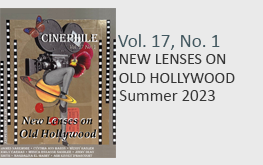
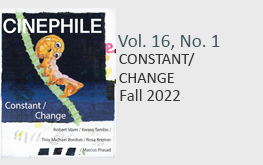
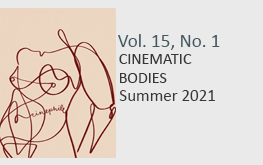
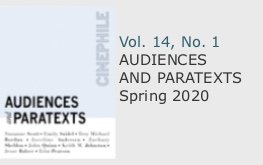
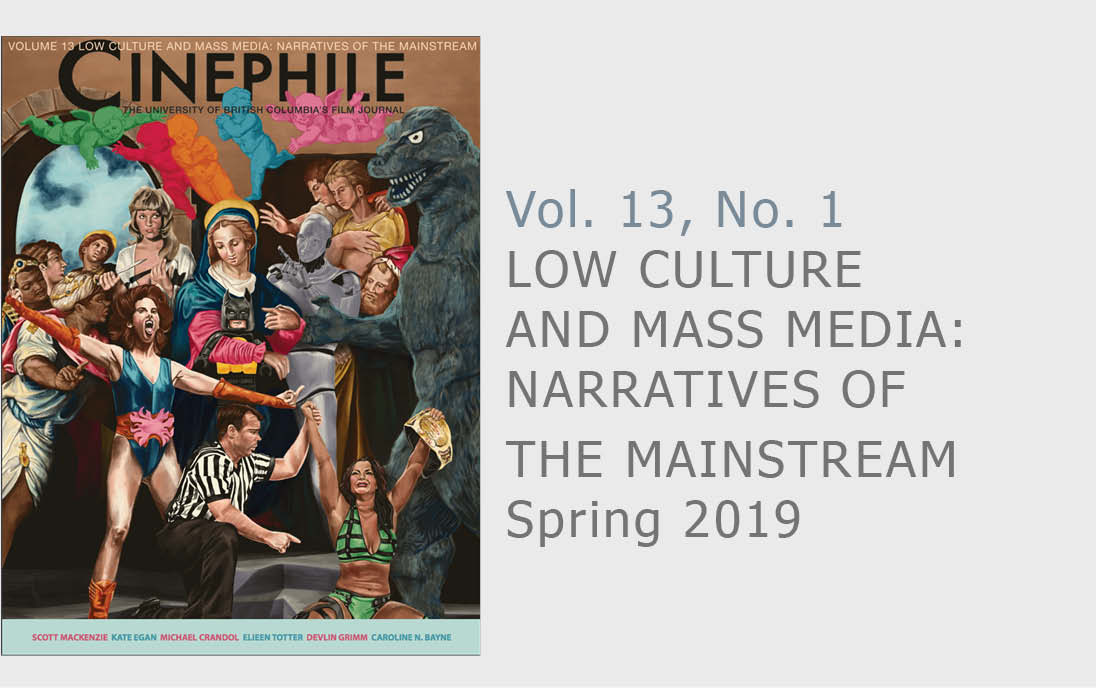
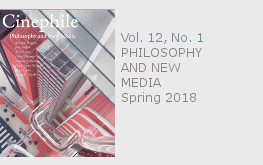
dumb ass didn’t even mention the actual movie “GORNO” 2004. Film was released by Brain Damage films & Maxim Media.
I read online that the movie GORNO was really made by Eli Roth,way before Cabin Fever? Do you know if thats true?